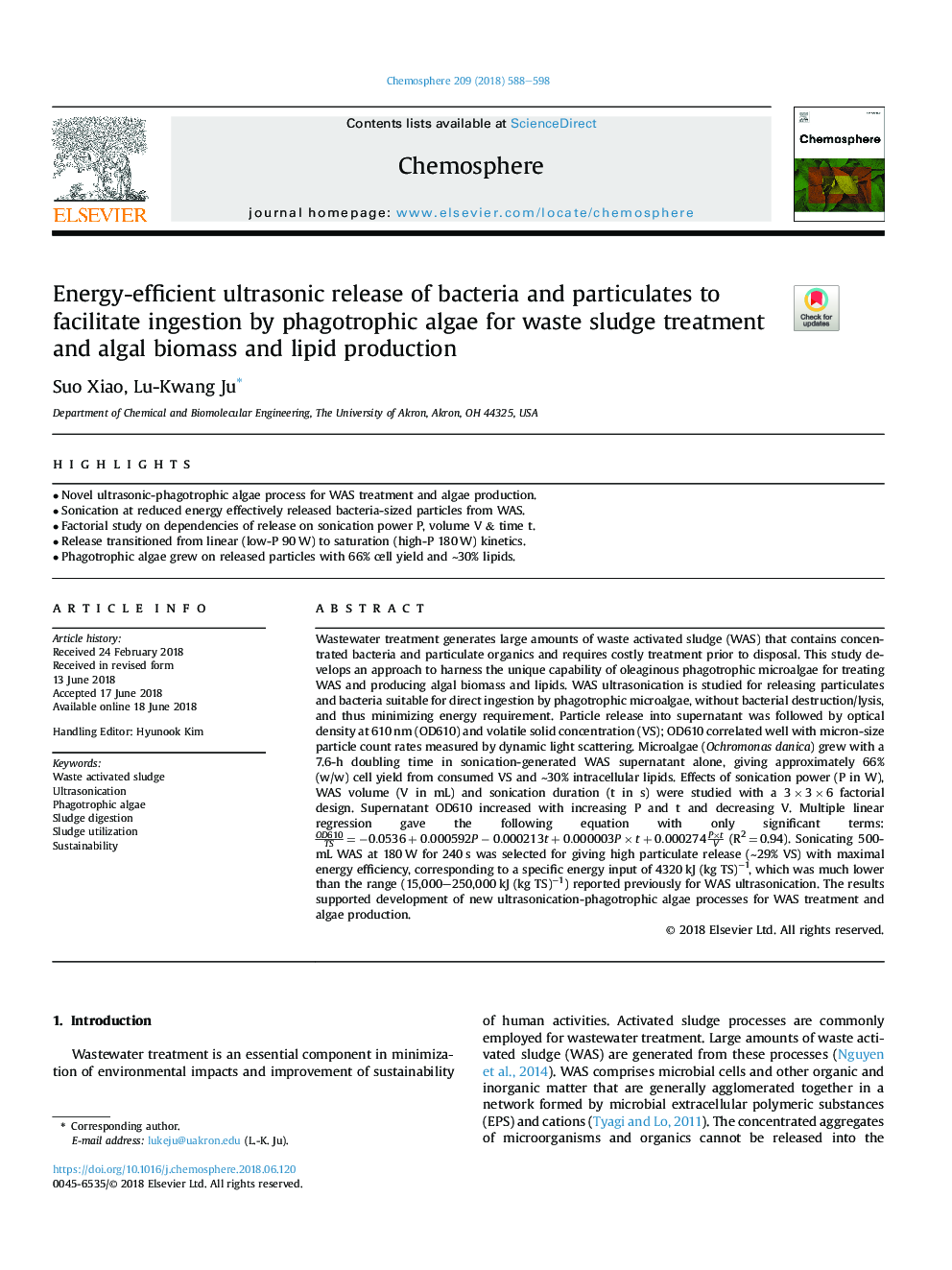| Article ID | Journal | Published Year | Pages | File Type |
|---|---|---|---|---|
| 8850641 | Chemosphere | 2018 | 11 Pages |
Abstract
Wastewater treatment generates large amounts of waste activated sludge (WAS) that contains concentrated bacteria and particulate organics and requires costly treatment prior to disposal. This study develops an approach to harness the unique capability of oleaginous phagotrophic microalgae for treating WAS and producing algal biomass and lipids. WAS ultrasonication is studied for releasing particulates and bacteria suitable for direct ingestion by phagotrophic microalgae, without bacterial destruction/lysis, and thus minimizing energy requirement. Particle release into supernatant was followed by optical density at 610â¯nm (OD610) and volatile solid concentration (VS); OD610 correlated well with micron-size particle count rates measured by dynamic light scattering. Microalgae (Ochromonas danica) grew with a 7.6-h doubling time in sonication-generated WAS supernatant alone, giving approximately 66% (w/w) cell yield from consumed VS and â¼30% intracellular lipids. Effects of sonication power (P in W), WAS volume (V in mL) and sonication duration (t in s) were studied with a 3â¯Ãâ¯3â¯Ãâ¯6 factorial design. Supernatant OD610 increased with increasing P and t and decreasing V. Multiple linear regression gave the following equation with only significant terms: OD610TS=â0.0536+0.000592Pâ0.000213t+0.000003PÃt+0.000274PÃtV (R2â¯=â¯0.94). Sonicating 500-mL WAS at 180â¯W for 240â¯s was selected for giving high particulate release (â¼29% VS) with maximal energy efficiency, corresponding to a specific energy input of 4320â¯kJ (kg TS)â1, which was much lower than the range (15,000-250,000â¯kJ (kg TS)â1) reported previously for WAS ultrasonication. The results supported development of new ultrasonication-phagotrophic algae processes for WAS treatment and algae production.
Related Topics
Life Sciences
Environmental Science
Environmental Chemistry
Authors
Suo Xiao, Lu-Kwang Ju,
